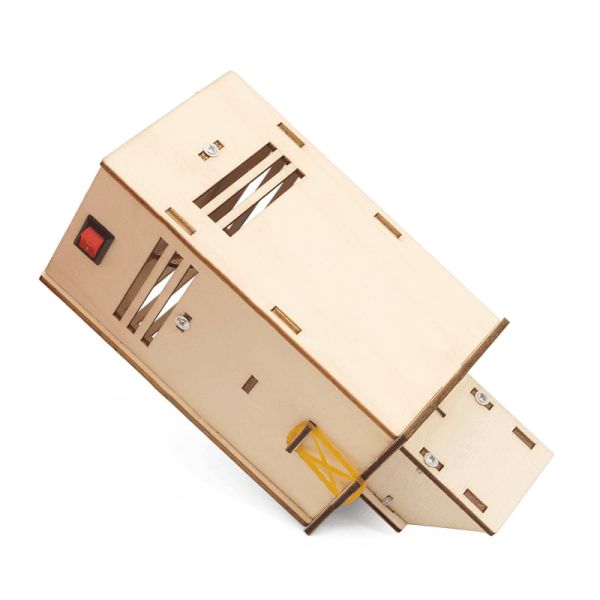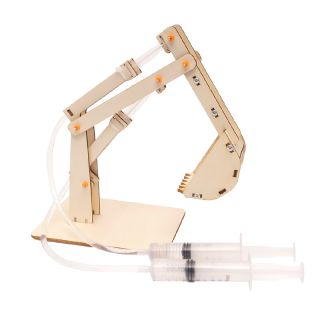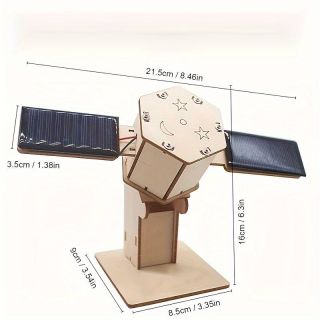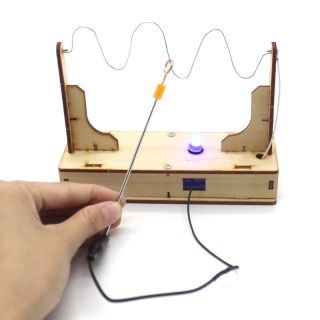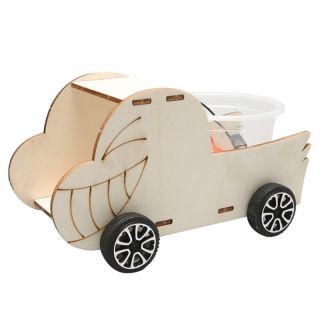All Categories
Vacuum Cleaner Kit - Cat# 80-50-W022
In stock
SKU
80-50-W022
CA$7.60
- Buy 2 for CA$7.00 each and save 8%
- Buy 6 for CA$6.35 each and save 16%
Vacuum Cleaner Kit — A Hands‑On STEM Experience
Introduce your students to the principles of air pressure and mechanical systems with the Vacuum Cleaner Kit. This engaging project allows students to build a simple vacuum cleaner, providing a practical application of science and engineering concepts in a classroom setting.
What’s in the Kit & How It Works
The kit includes:
Plastic components for assembly
Fan and motor
Battery holder and switch
- Batteries NOT included (2 x AA batteries required)
Clear and simple instructions for assembly
Students will assemble the components to create a working vacuum cleaner. By connecting the motor to the fan and power source, students can observe how the fan creates airflow, simulating the suction mechanism of a real vacuum cleaner.
STEM Concepts Illuminated
This kit provides an excellent opportunity to explore various STEM concepts:
| STEM Area | Key Concepts | Classroom Applications & Extensions |
|---|---|---|
Air Pressure | High vs. low pressure, airflow | Discuss how differences in air pressure create suction; explore how vacuum cleaners use this principle to pick up debris. |
Mechanical Systems | Motors, fans, switches | Examine how motors drive fans to create airflow; understand the role of switches in controlling the system. |
Energy Conversion | Electrical → Mechanical → Airflow | Observe how electrical energy is converted into mechanical energy, which is then used to move air. |
Design Engineering | Efficiency, ergonomics | Discuss design considerations for real-world vacuum cleaners; explore how design affects performance and user experience. |
Environmental Science | Waste collection, filtration systems | Discuss how vacuum cleaners collect debris and the importance of filtration in maintaining air quality. |
Why Teachers Will Love It
Hands-On Learning: Students actively engage in building and understanding the mechanics of a vacuum cleaner.
Cross-Disciplinary Connections: Integrates concepts from science, technology, engineering, and mathematics.
Encourages Critical Thinking: Students can experiment with different configurations and observe outcomes.
Affordable and Scalable: Cost-effective for classroom use and suitable for group activities.
Classroom Activity Ideas
Airflow Experiment: Test how different fan speeds affect the suction power of the vacuum cleaner.
Design Challenge: Encourage students to modify the vacuum cleaner design to improve efficiency or performance.
Energy Analysis: Discuss how the amount of electrical energy used impacts the airflow and suction power.
Environmental Discussion: Explore the role of vacuum cleaners in maintaining cleanliness and air quality.
Bring science and engineering together in a creative, hands-on project. With the Vacuum Cleaner Kit, students won't just learn about air pressure—they'll experience it in action.





